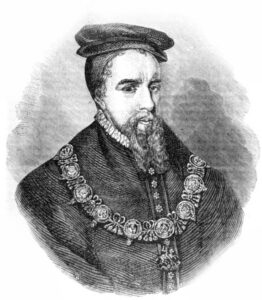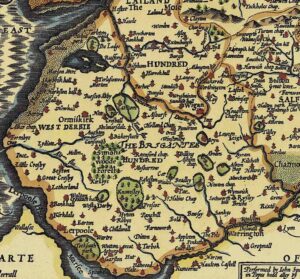by Chris Watson
It has been 10 years since Richard III’s body was reinterred, and a series of events have recently taken place to mark the anniversary.
Richard’s story, of the Princes in the Tower and his body being discovered under a Leicester car park, is well documented.
Perhaps less well known is the role played by a duplicitous landowner from modern-day Merseyside, whose actions led to Richard meeting his fate.
As the Battle of Bosworth Field turned against Richard, so too, did one of his most capricious allies, Thomas Stanley, 1st Earl of Derby.
Stanley was a member of a powerful and wealthy family, who estates covered what was then known as the West Derby Hundred.

The hundred covered the south west of Lancashire, encompassing present day Liverpool, Southport and Ormskirk. Stanley ran his vast expanse of land from Lathom House, a huge stone castle built by his father in 1496.
Despite his land being in Lancashire, when the Wars of the Roses broke out, Stanley found himself aligned with the House of York.
In 1451, Stanley had wed Lady Eleanor Neville, the sister of Richard Neville, Earl of Warwick, and known to history as Warwick the Kingmaker. This meant that Stanley was now, officially at least, on the side of the Yorkists.
The Wars of the Roses were a series of long-running spells of ‘non-religious aristocratic violence’, as the author Dan Jones put it, that centred on politics and power, control and the crown.
Henry VI’s inability to rule opened the door to potential usurpers. The first, Edward IV, had taken the opportunity to depose Henry, with a lengthy game of thrones ensuing.
Bloody battles were played out across England, including the notorious Battle of Towton, which took place on 29th March 1461 amid a fierce snowstorm. Towton is believed to be the largest and bloodiest battle ever fought on English soil.
With such upheaval engulfing the country, and kings from both sides of the divide taking their turn on the throne, Stanley became a remarkably skilled operator. This skill was demonstrated at the Battle of Blore Heath in 1459.
As the battle raged, Stanley, along with his younger brother, William, kept his troops back. Without a clear winner emerging, the canny Stanley simply refused to commit his men to the fray.
Stanley’s actions at Blore Heath foreshadowed what was to happen some 24 years later.
There was little indication, at least overtly, that Stanley would eventually play such a crucial part in the outcome of the war. At the coronation of Richard III,

another Yorkist king, he had carried the constable’s mace.
Even with his role in the coronation, Stanley was not entirely trusted by the new monarch.
When Stanley’s wife, Eleanor, died in 1472, he remarried the same year. His new wife, Lady Margaret Beaufort, was the mother of the leading Lancastrian claimant, Henry Tudor.
This new layer to Stanley’s character led to his son, George, Lord Strange, being kept under ‘royal supervision’ while Stanley was away.
The final clash of the Wars of the Roses took place on 22nd August 1485, at a place called Bosworth Field.
On one side of the battlefield were the thousands under Richard III’s banner, facing the equally numerous men of the would-be king, Henry Tudor. Roughly a mile away from the fighting were Stanley’s forces, watching and waiting, just as he had done at Blore Heath all those years before.
As both armies clashed, Richard, seeing the Stanleys unmoved, ordered his hostage, George, to be beheaded. With the chaos of battle all around, this order was not carried out.
The continued prevarication by Stanley was not replicated by his brother, William. The younger Stanley led him men into battle, and crucially sided with the usurper Henry.
Now outnumbered, Richard’s force was encircled. Richard himself became embroiled in the thickest of the fighting.
The final act of the battle came when a halberd wielded by one of Stanley’s men was struck into the King’s skull. The King was dead. Henry, the pretender, had won.
With the battle over, Stanley seized him moment. The crown had been found among the spoils of the battlefield. Stanley placed the crown onto Henry’s head, signifying the start of the Tudor age.
The most destructive period in England’s medieval history had been brought to a close, and the final act was carried out by an Earl born on the outskirts of Ormskirk and who owned vast areas of land that make up modern-day Liverpool.











